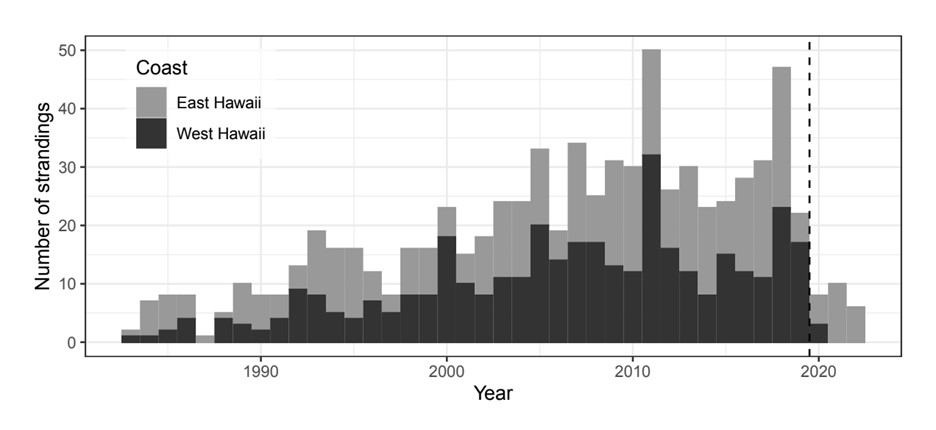Green Turtle Strandings on Hawaii Island
(1983-2022)
We present the first comprehensive analyses of long-term
stranding data from Hawai‘i Island. Hawai‘i Island merits scientific
scrutiny because of the island’s large size (over half of total land
area for the State), southernmost location in the archipelago, lowest
human population density, and important turtle foraging and resting
areas—recently proposed as critical habitat. Strandings increased on
Hawai‘i Island between 1983 and 2022. The most common known cause of
stranding was hook-and-line fishing gear (21.4%). The results provide
information that can inform resource managers, policy makers, and the
public about the various types and magnitudes of impacts, anthropogenic
and natural, so that mitigation measures can be put into practice. Our
findings allow for comparison with other green turtle populations
worldwide. Contribution of fishing gear to strandings emphasizes the
need for additional mitigation efforts: barbless hooks and effective
line removal techniques.

Read the full article, published by Zoological
Studies, here
Edwin Ariza-Marín's Twitter: @EdwinArizaMarin
Follow Zoological Studies on
Twitter @ZooStudies
and Facebook
